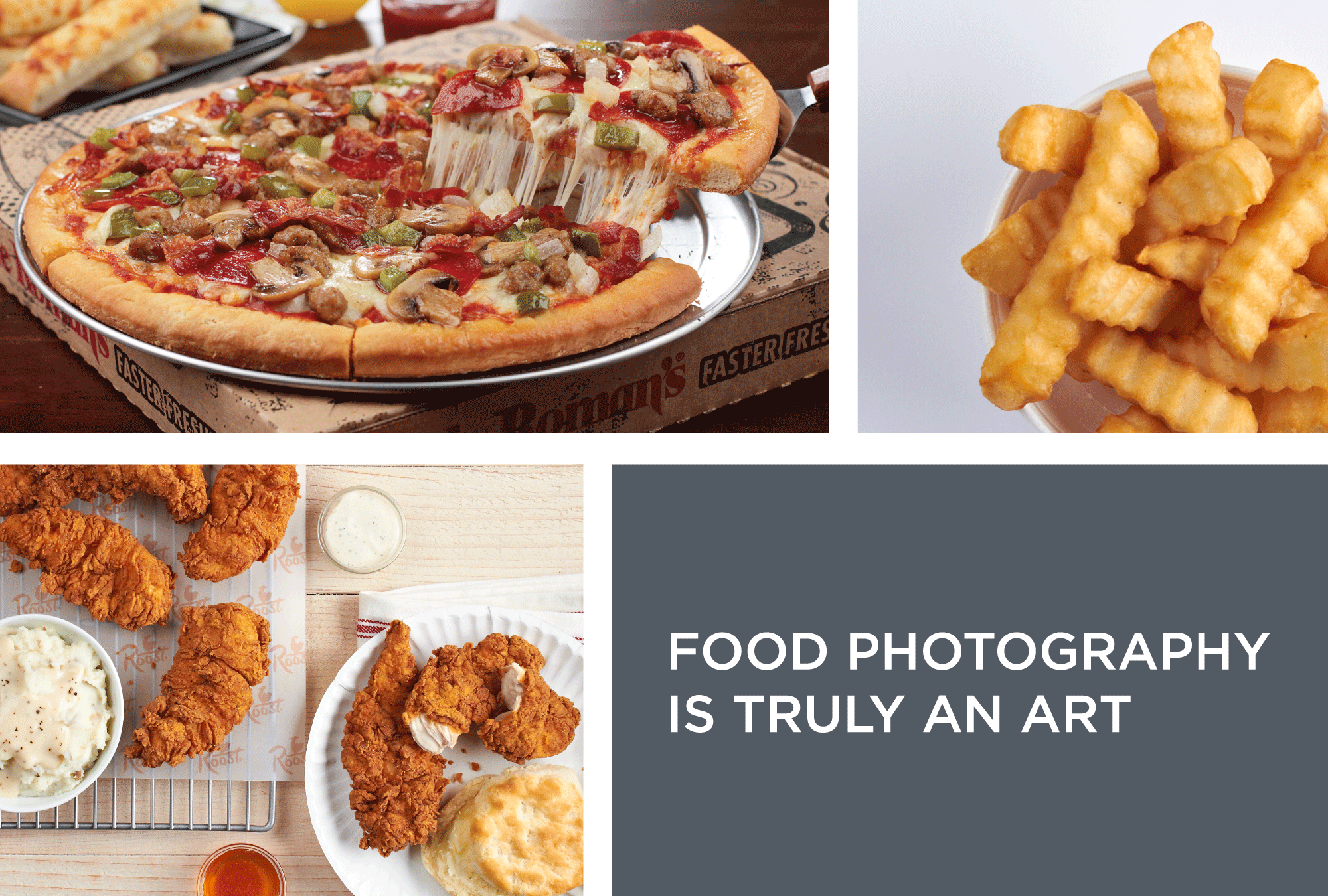‹ INSIGHTS | RETAIL BETTER BLOG
A Recipe For Perfection in Food Service Photography
Winning the Food Service Customer – Starts with Great Photography
AUGUST 17, 2023 BY MARGARET SOTROP – Beautiful photos of tempting food choices don’t happen by accident. The client, art director, food stylist and photographer all play an important role in this collaborative effort. Good communication is key to keep all the parties informed. The client brings product insight and shares the specific goals and objectives of the food program. The art director helps to shape the marketing strategies and acts as liaison between the client and photographer, balancing the needs of both. The food stylist turns the product into art, making the food look more photogenic by creating the proper visual presentation. The photographer adds the technical knowledge, perfects the light, the focus and angles that capture the most appealing food texture, color and image possible.

What can you expect at a food photography shoot? Below are a few points that I feel are important to remember before embarking on one:
First of all it is not as easy as it looks, the simplest food shot make take hours to complete, this is a process that cannot be rushed if perfection is the goal.
Professional Quality
Attention to detail and the ability to convey quality and flavor will really make or break your food service program. There really is a difference between a “regular” all-purpose photographer and an experienced photographer that specializes in food services, so don’t compromise. A food photographer uses special lenses, mirrors, reflectors, techniques and photo equipment that the other won’t possess. You definitely don’t want the competition to beat you on this all-important element.
Image Intentions
Before shooting, it’s imperative to have a clear understanding of how you intend to use the food images. Will they be silhouetted on a menu board or other background? Tightly cropped or shown in an environmental shot? Do you need to leave room for copy in the photo or will it go underneath? Are you using a vertical, horizontal or square composition? It is important to know up front and very difficult to change after the fact. Just know that your art department will have a heck of a time trying to add background to a shot later if you change your mind.
Style Consistency
All items within the program should be shot in a similar style for the most pleasing presentation. For optimum results, utilize this best practice: Have all items shot by the same photographer at one shoot. Although it requires more upfront planning, in the long run, this will save time, keep you organized and also be the most cost-efficient method. Consider multiple uses for your photographs to stretch your dollar farther. How can you amortize the expense and reuse the images in future promotional efforts?
Set The Standard
A basic standards guide will help maintain the original intent for the photography. Communicate the project details with the team, including the number of shots, propping and background, mood you want to convey, even product usage. Agree on an estimate and schedule before the shoot begins. Know your “look” so that you don’t have to reshoot everything later to match a new look. Otherwise, a good photographer should ask plenty of questions and help compose a guide with you.
Product Truth
Yes, you want to tempt the eye and the palette with photos good enough to eat. However, despite the aesthetic appeal and colorful contrasts, you must also stay true to what the customer will actually purchase in store. If the product looks beautiful but it doesn’t look like what you sell, it will confuse your staff and customers alike. A good photographic team can make your item look as amazing as possible without over-styling. Don’t be surprised if the stylist asks you for or creates his own food “stand-in”– a replica of your product’s size, shape and surface texture for the photographer to test his lighting and composition until the hero item hits the set. NOTE: Some items should be left off the set as they may be delicious to the taste but will never photograph well. There’s nothing wrong with shooting those products in their packaging.
And, finally, clients usually say that they want their food photography to look natural. People have certain expectations about what “natural” looks like and it may vary from person to person–even between you and the photographer. Certain environments and background colors can make the food appear unnatural and unappealing. Natural also means the food may look better arranged in a more casual manner. (Perhaps all of the layers of your deli sandwich shouldn’t be perfectly aligned.) Allow your team some flexibility here to create settings that fit the food. Be open to new options but know that the ultimate decision is yours.




